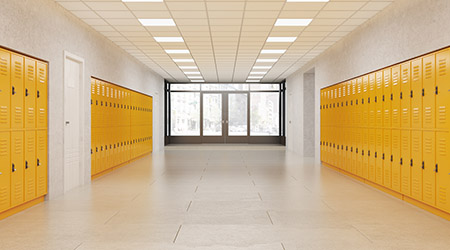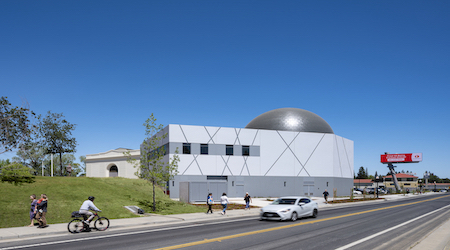
Case Study: Lighting Controls Offer Huge Energy Savings for School District
November 16, 2021
In 2019, Enumclaw School District in central Washington celebrated the completion of a three-year, $68 million renovation of the district’s only high school. The project brings modern design and greater energy efficiency to the campus. To meet its variety of lighting needs, the district sought a system that was customizable and fit right in with the modernized campus. Their solution? LEDs equipped with Luminaire Level Lighting Controls (LLLCs).
Finding The Right Fit
To achieve the same aesthetic and lighting performance in all buildings, the district looked to replace older fluorescent lamps and reduce installation time. The district’s facility managers were drawn to LLLCs after learning about their savings potential and local utility incentives. With embedded sensors in each LED fixture, LLLCs offer innovative controls strategies that provide maximum energy savings, easy installation and maintenance and flexibility in space utilization.
The school district worked with Washington’s Pacific Lamp & Supply Company to install a sample of several fixtures with LLLCs in their maintenance offices. Over a six-month period, school leaders and staff used the system and gave feedback. With both simplicity and ease of installation as high priorities, the team landed on the LG Sensor Connect LLLCs with out-of-the-box wireless programming capabilities.
“We have received nothing but positive feedback,” says Enumclaw School District Facilities Manager Peter French. “Some of the spaces with the new fixtures are offices like counseling centers, for example, where we are able to tune the light level to what they want. Most are choosing less light, resulting in even more savings.”
Simple Installation
According to French, the installation process was a “no-brainer.” A crew of three Enumclaw facilities employees installed the new LLLC system over a three-week period. One person stripped the old fixtures and installed the new retrofit, while the others handled packaging and disposal of old troffers. The team then worked with a local LG representative to quickly program and commission the project.
“The system replaces the existing troffer and ballast, and swings into place like the troffer that was removed. It operates on line voltage, either 120 or 277 volt," says French.
“Then you just walk around with a tablet and program the fixtures however you’d like. We use a light meter to adjust the initial lumen output to around 50 foot-candles at the desk. We have recently discovered that LG has wireless dimmers that have worked really well in special education rooms that have a population that is more sensitive to brighter lights. It’s just very simple, no control wiring involved —something our in-house crew can easily install and program.”
Enumclaw Schools predicts an annual savings of more than $13,000 in energy costs following the installation and programming of its LLLC system. The school district has now installed LLLCs in three other buildings and will be installing in two additional schools this summer.
In addition to energy savings and reduced maintenance, French describes the level of customization that comes with LLLCs as an added benefit, along with improved light quality – teachers and staff get the exact lighting they want at the touch of a button, and without any of the “flickering” associated with the old fluorescent lamps.
“The largest benefit is, of course, the energy savings but, the improved light quality and ability to tailor lighting levels to the occupants needs has also been a great success," says French. "We also love having the look of the fixture match the new construction.”
Recommendations from the Field
When considering an LLLC system, French recommends the following:
- The best thing you can do is see how the product works in person – try out different fixtures and install a sample.
- Look for incentives. In addition to the overall cost of LLLCs going down over the last several years, many utilities offer incentives to offset fixture costs. Contact your local utility to get started today. Puget Sound Energy provided a $35,800 incentive for this project.
- Make sure there you have local support. Most LLLC systems are user-intuitive. However, if you opt for a more complex system, look for those that are able to provide support locally.
Next
Read next on FacilitiesNet












